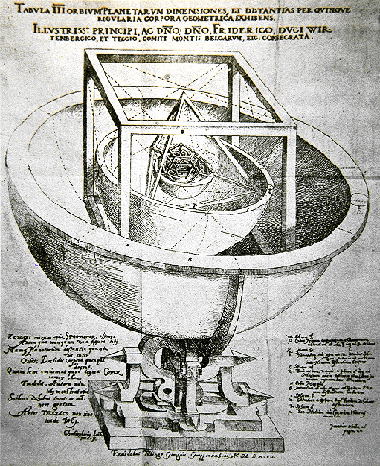Although originally intending to join the church, due to his great prowess in mathematics, Kepler was recommended for a mathematics teaching position at a Protestant seminary school. After a bit of personal strife, Kepler shed his ambitions for the church and began to teach mathematics. [1]
In his personal study, Kepler was very interested in the motion of planets and their orbit. As Kepler was devoutly religious, he often pondered why God created the universe this particular way. At the time, Copernicus’s theory that the planets revolved around the centralized sun had not been accepted, but Kepler particularly took to this idea. He valued the notion that the solar system was the image of God, and having the largest celestial body, the Sun, at the center seemed to somehow mimic God in a pleasing way. [1]
Kepler came to a sudden realization about planetary orbits while teaching at the blackboard. After inscribing a triangle inside of a circle, and then inscribing further a circle inside that triangle, Kepler noted that the ratios between the two circles are similar to the ratios of Saturn’s and Jupiter’s orbits. Further, he theorized that inscribing more geometric shapes would reflect the ratios of other planetary orbits. For Kepler, this would explain the way in which God used geometry when creating the universe. [1]

Taken from http://galileo.rice.edu/sci/kepler.html
This picture demonstrates the method of inscribing of geometrical shapes to model the ratios of the planets in the solar system. The actual image is taken from one of Kepler’s books, the Mysterium Cosmographicum or the Secret of the Universe. [1]